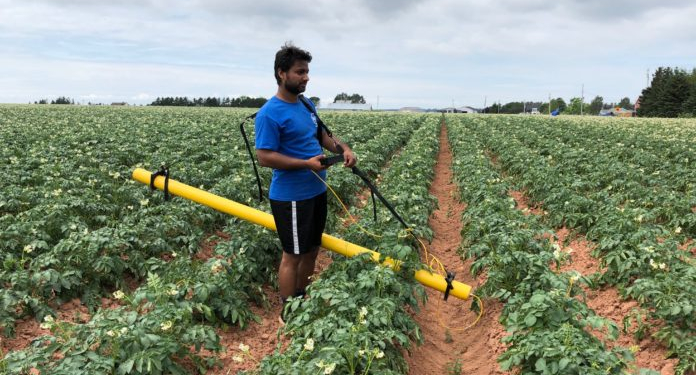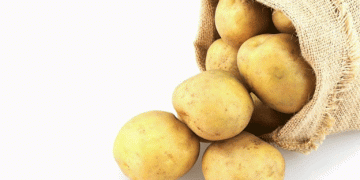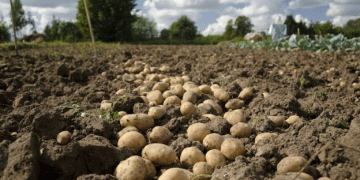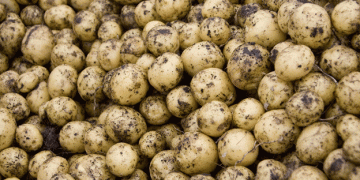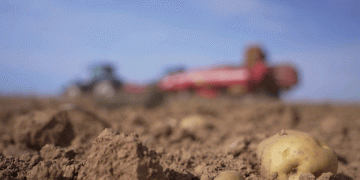A group of researchers in Canada are using precision agriculture to map field management zones.
Smart agriculture is becoming more and more common, assisting growers with their work and helping them to learn more about their fields and the crops they plant. And while precision agriculture encompasses a wide variety of things, a group of researchers in Prince Edward Island and Quebec are looking at one aspect of it — using sensors to discover soil variability by mapping field management zones.
“We are working on different fields to try to fine tune our management zones,” Athyna Cambouris, precision agriculture scientist at Agriculture and Agri-Food Canada (AAFC), explains in a phone interview. “We try to define in each management zone, what should be the specific amount of nitrogen they should receive by using vegetation index measured in each management zone at crucial potato growth stages.”
The project started in 2018 and lasts for five years. It’s part of the Canadian Potato Council with the Canadian Horticultural Council cluster projects funded by the Canadian Agricultural Partnership (CAP). Cambouris is the project lead and based in Quebec, and is working with Aitazaz Farooque, an associate professor and industry research chair for precision agriculture in the faculty of sustainable design engineering at the University of P.E.I.
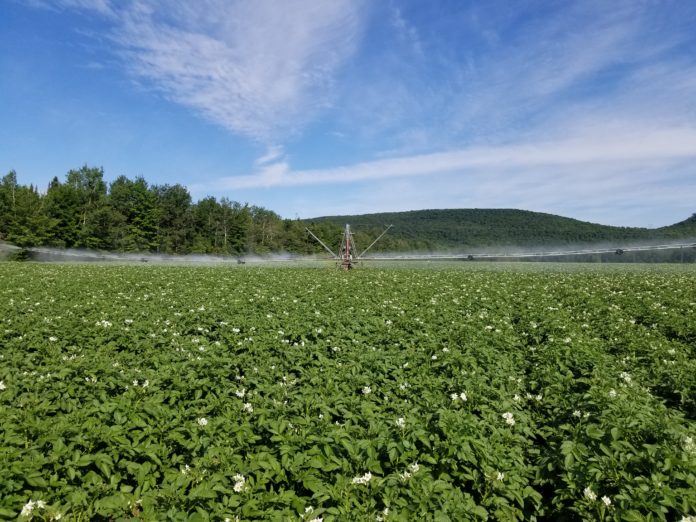
Cambouris has spent her career of 25 years researching precision agriculture technologies in potatoes, while Farooque has been working in precision agriculture research since 2008 when he did his masters research on it, and while he has mainly researched potatoes, he has also done some work with blueberries.
Both are working with potato growers and agronomists in their respective regions to test sensors in soil to evaluate variability and determine field management zones. The two were connected when Cambouris was working on a smart agriculture project with McCain Foods in New Brunswick. When the cluster project opportunity came up, it was decided they should collaborate as there had been plans to include researchers in Western Canada, but that didn’t pan out.
The Precision Agriculture Project
Cambouris and Farooque are using ground conductivity sensors to map fields and develop management zones based on the maps. From there, the fertilizer needs for the crops are able to be determined based on the management zones. “That was an indirect method of estimating what is the productivity status in the soil, and then how we need to quantify that and respond to it so that we are applying those inputs based on the need,” Farooque explains in a Zoom interview.
The goal of the project is to be able to assess the feasibility of using ground conductivity sensors in potato cropping to manage crop inputs. The first two years of the study were foundational, Farooque explains. Sensors were tested to make sure they were accurate and able to detect what Farooque and Cambouris were looking for. Starting this growing season, they’ll be building on this work by starting to experiment with crop inputs.
“We have all the data collected and we analyze to see how those management zones responded to the variability of inputs and whether we were able to increase the yield with a minimal environmental impact,” Farooque says. He adds during the last growing season, they used variable rate fertilization and seeding based on the management zones to test the productivity benefits.
The crop inputs being studied differ between Quebec and P.E.I. In Quebec they are focusing on nitrogen fertilization while in P.E.I. they are using other inputs besides nitrogen.
In the Fields with Precision Agriculture
Growers involved in the project have been interested by the results they are seeing. Cambouris has found most of the growers she’s working with had been using yield monitors before but not mapping field management zones.
“They are in the process to understand what the management zone means because this is one thing to the delineate management zones, but after that you always have to do some self-test to know what this management zone actually is telling you. Is it the story of water? Is the story of organic matter? Is the problem of compaction?” she says.
For Nathan Ching, with Black Pond Farms in P.E.I., he was interested in taking part in the project to better understand the yield differences he finds throughout his fields.

“Most growers are concerned with the yield variability within any given field. We are trying to understand which soil properties contribute the most to yield variability and which of those can be altered or improved. It’s not uncommon to see a 75 hundredweight per acre difference within different zones on the same field,” he explains in a phone interview. With the project only a few years in, Ching has been able to confirm the variability he’s seeing in his fields, but he still isn’t able to determine what is causing it.
“We are trying to approach some of these variabilities differently with management through soil building rotational crops and variable rate spreading of inputs. The past few seasons though, the lack of soil moisture and excessive heat have been the most concerning,” Ching says. Ching hopes the remainder of the study will help him pinpoint what he needs to do to have more consistent yields across his fields.
